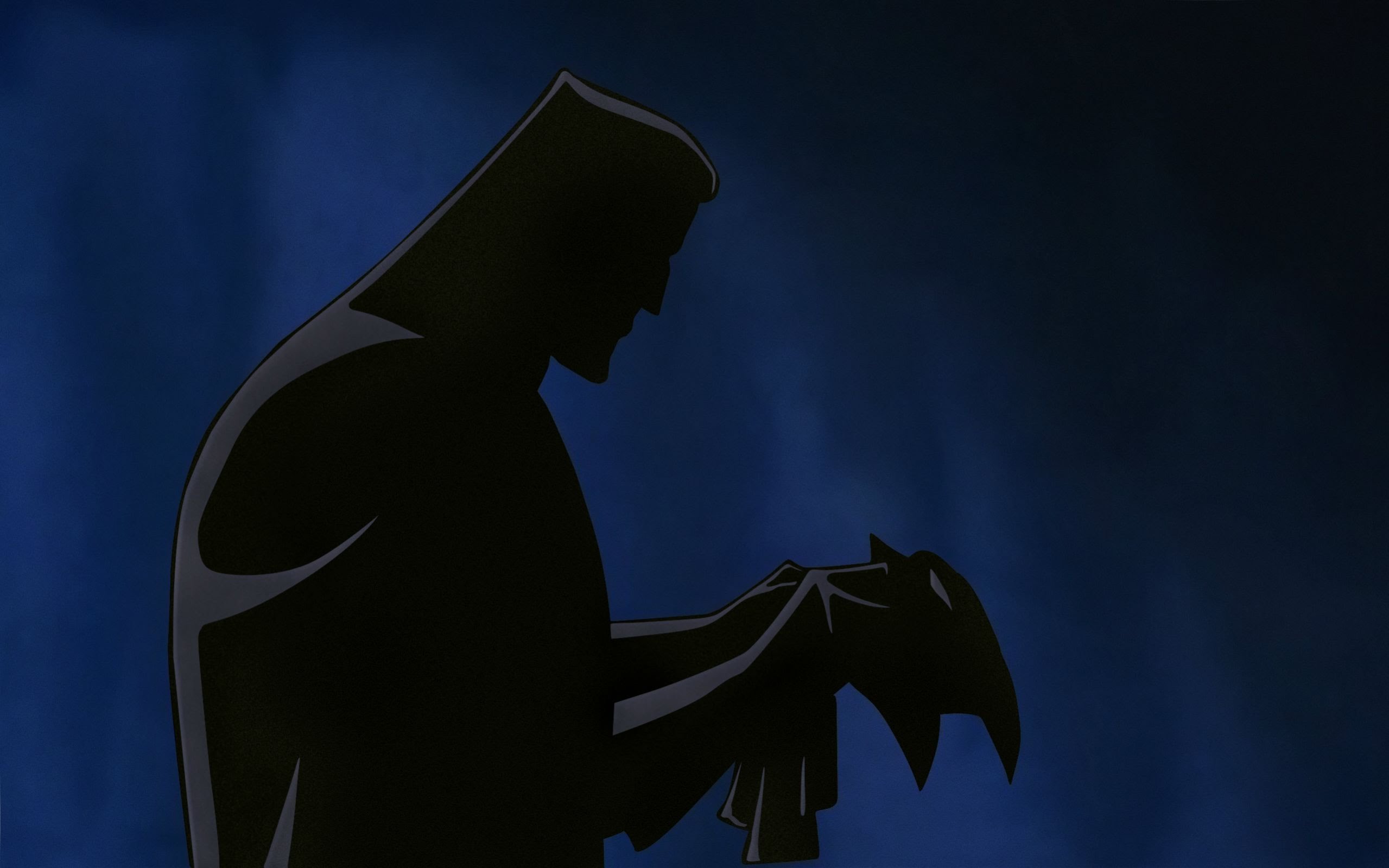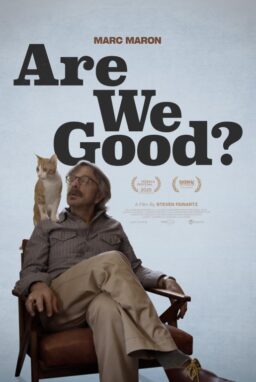Before Christopher Nolan’s trilogy, the only movie that took Batman seriously was a cartoon.
Originally a direct-to-video release, Warner Bros. Animation rushed “Batman: Mask of the Phantasm” into theaters 25 years ago next month. Created by the Emmy award-winning team behind “Batman: The Animated Series,” this feature-length animated film was thrown into theaters during the 1993 Christmas season alongside heavyweights like “Schindler’s List” and “Philadelphia.” Of course, “Mask of the Phantasm” flopped.
Even as Roger Ebert and Gene Siskel praised its 1994 home video release, “Mask of the Phantasm” existed as an overlooked stop-gap between Tim Burton and Joel Schumacher’s live action entries, 1992’s “Batman Returns” and 1995’s “Batman Forever.” However, “Mask of the Phantasm” did what Burton and Schumacher couldn’t—it gave us a reason to care about Batman. Until the ‘00s, “Mask of the Phantasm” was the only Batman movie that made Batman the subject of its film, not an accessory.
Directed by Eric Radomski and Bruce W. Timm from a story penned by “The Animated Series” vet Alan Burnett, “Mask of the Phantasm” shows The Dark Knight investigating another masked vigilante named the Phantasm. The new presence appears in a cloud of smoke, with a blade for a fist, attacking Gotham City mobsters. At the same time, Wayne’s old flame, Andrea Beaumont (voiced by Dana Delaney), has returned. Could she be the Phantasm?
Through film noir-style flashbacks, “Mask of the Phantasm” presents a vulnerable Bruce Wayne (voiced by Kevin Conroy) reckoning with his past while facing a violent future as Batman.

While other Batman movies flirt with Wayne’s haunted past, this is the main focus of “Mask of the Phantasm.” Not only did Wayne lose his parents at a young age, he also lost the love of his life, his only semblance of normalcy, in Beaumont. The audience is finally given displays of his anger, guilt and disappointment. In the midst of making another challenging decision, Wayne stares at his parents’ portrait in his manor, wondering if he’ll reconnect with Beaumont. In flashbacks, Wayne visits his parents’ grave, seeking advice about his love for Beaumont, and later asking permission to become Batman.
The movie also shows Wayne’s difficult transition into a superhero. A man who brazenly fights crime, be it in a ski mask or blue sweatshirt, becomes Batman. After these sequences, we see Wayne bloody, bandaged and bruised, which felt like a first at the time. Even after he has become the famed vigilante, Wayne perks himself atop a skyscraper as Batman. While in costume, Wayne is preoccupied with the past as he spies on Beaumont going on a date with councilman Arthur Reeves (voiced by Hart Bochner). The rain pours as Batman grimaces, focusing his binoculars on Reeves and Beaumont sharing a romantic moment. Those types of details were never delivered in live-action Batman movies until “Batman Begins.”
Unlike every live-action Batman movie, “Mask of the Phantasm” runs under 80 minutes. Rather than stretching out a movie over two hours, it excels as a lesson in tight storytelling. As Siskel noted in his review, “Every image counts.” Each scene moves the story along at a rapid pace. There are no lulls. Just as soon as the Phantasm is introduced, taking out crime boss Chuckie Sol, the film moves to Reeves yelling for Batman’s head, then Wayne hearing of Beaumont’s return.
Ebert added that “Mask of the Phantasm” worked well because “animation can do some things live-action can’t.” An obvious statement, but it’s spot-on and still applicable to modern day comic-book movies. Here, Wayne climbs the grill of an 18-wheeler and throws spiked bombs at its tires. The truck flips, creating an impressive sequence that countless action movies have duplicated with success and failure. Later, Wayne confronts a gang of punks, jumping towards one motorcycle-riding baddie and landing a punch. It’s an acrobatic stunt modern CGI still can’t replicate as naturally.

In contrast, Burton and Schumacher’s Batman movies are two-hour-long time capsules of each director’s style. “Batman” is dark, and then Jack Nicholson appears as The Joker, jamming some Prince. “Batman Returns” is full of Burton’s quirks (leather, prosthetics, an appearance by Paul Reubens) and not much else. Burton’s films are both more interested in their villains—Joker & Penguin/Catwoman—than the hero himself.
Schumacher’s aren’t really interested in anything at all. The director lit scenes with neon pinks, greens and blues, shot action at canted angles, and overstuffed his casts with big names playing meaningless parts (hello, Drew Barrymore, Debi Mazar, Alicia Silverstone, Vivica A. Fox and Elle Macpherson). Two decades later, even Schumacher admitted that “Batman & Robin” was a toy commercial.

In comparison, “Mask of the Phantasm” doesn’t feel like a product of the ‘90s. Instead, half of the movie feels like it’s set in the 1940s. The creators credited “Citizen Kane” as inspiration for the film’s flashbacks. You can find more examples of that classic feel in “Mask of the Phantasm”’s score, architecture and automobile design, and mobsters using Tommy guns. Even Mark Hamill’s performance as Joker is exaggerated with one-liners like, “So, what’s an old-timer want with a two-timer like me?” and “Very cute, but I can blow smoke too, toots!” More than anything, Batman’s chief occupation, in the early comics and here in the film, is that of a private eye.
12 years after “Mask of the Phantasm,” Christopher Nolan solved the live-action Batman dilemma with his trilogy, creating three box-office hits that were dark and had stakes. But by 2016, Batman was back to a supporting role, huffing and puffing in “Batman v Superman: Dawn of Justice,” “Justice League,” and appearing out of nowhere in “Suicide Squad.” Nowadays, Batman is better served in LEGO movies.
While Batman himself may be in a transitional phase in American entertainment, DC and Warner Bros. Animation were ahead of the curve with “Mask of the Phantasm.” Since that release, the DC animated universe has continued to impress with direct-to-video titles such as “Superman: Doomsday,” “Batman: Under the Red Hood,” and “Justice League: Crisis on Two Earths,” to name a few. But with the influx of movies in theaters and on demand, what isn’t playing on 3,000 screens can be easily ignored.
There is some reason to hope, though. Besides “The LEGO Batman Movie”’s success, DC released another animated movie this summer with “Teen Titans Go! To the Movies.” While “Teen Titans Go!” wasn’t a box-office smash, it grossed more than $51 million worldwide, recouping its $10 million budget. “Mask of thePhantasm” couldn’t make its $6 million budget back. Like Marvel’s “Deadpool” and Guardians of the Galaxy,” “Teen Titans Go!” is also full of non-stop humor and gags that make more sense to adults (Nicolas Cage as Superman is a nice touch for geeks who wanted “Superman Lives”). But, here comes Marvel quick to respond with the upcoming “Spider-Man: Into the Spider-Verse,” headlined by Miles Morales (voiced by Sameik Moore), a half-Puerto Rican and half-African-American teenager with Spidey sense.
Unlike “Mask of the Phantasm,” “Spider-Man: Into the Spider-Verse” is backed by an unrushed promotional campaign, and an awareness that anything can be done with animated storytelling. Marvel knows it can add elements like Spider-Ham (John Mulaney), an older Peter Parker (Jake Johnson), and Daredevil villain Kingpin (Liev Schreiber). Sure, it’s a gamble, but “Into the Spider-Verse” will come closer to its source than any live-action adaptation possibly could because it’s drawn just like the comic books. Already, fans are salivating at the prospect of seeing a cartoon Spidey as its trailer has nearly 30 million hits on YouTube.
The likely success of “Spider-Verse” could lead to a number of other high-profile animated projects: Jeph Loeb and Tim Sale’s Superman For All Seasons would be a perfect feature-length animated film; Martian Manhunter is the type of character whose story would get botched by CGI. And why would anyone try to make a live-action Watchmen again, when you could make that an excellent animated miniseries? With “Mask of the Phantasm,” DC seemingly knew how well its characters were served by feature-length cartoons. Now, 25 years later, it looks like DC and Warner Bros. Animation are once again chasing Marvel.
Like Bruce Wayne, DC is constantly reckoning with its past mistakes, trying to force a new future. If DC’s next move is to rush an animated feature out to theaters, no matter how great it is, it might take another 25 years for audiences to come around. With regards to “Mask of the Phantasm,” it’s a shame it took so long, because in the ‘90s, it was the only Batman movie that mattered.
“Batman: Mask of the Phantasm” will celebrate its 25th anniversary by returning to the big screen for one day only on Monday, November 12th, courtesy of Fathom Events. For tickets and showtimes, click here.











